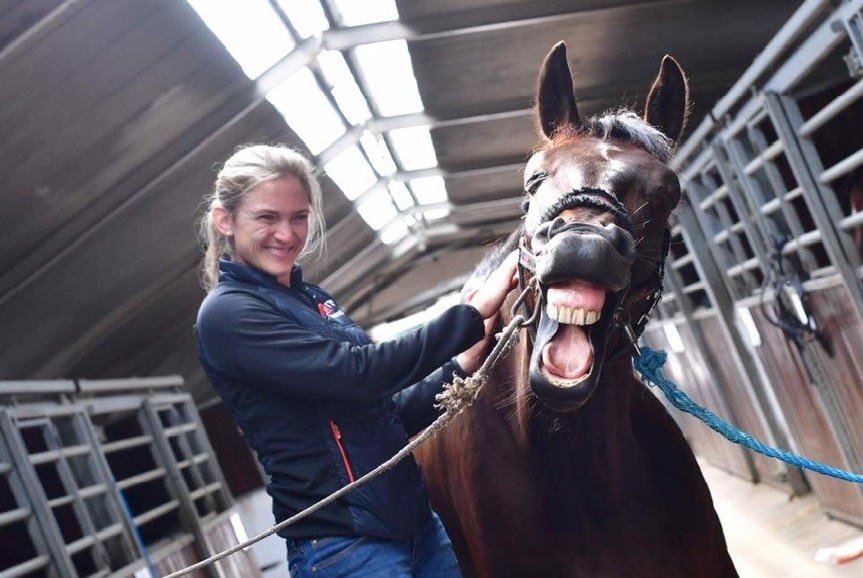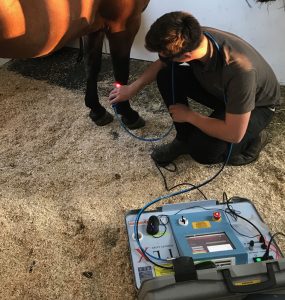Equine Therapy for Children: Emotional and Behavior Support Explained
Equine Therapy for Children: Emotional and Behavior Support Explained
Blog Article
Laser Treatment in Horse Treatment: A Modern Approach to Improving Steed Health And Wellness
Laser therapy has actually become a critical strategy in equine therapy, using focused light power to foster mobile repair work and speed up recovery from a range of ailments. This non-invasive approach is particularly reliable in managing musculoskeletal injuries, injuries, and inflammatory conditions, significantly boosting total equine health. By promoting mitochondrial activity and increasing ATP production, laser therapy not just improves flow but likewise provides substantial discomfort relief. As this cutting-edge treatment continues to obtain grip, it opens fascinating opportunities for resolving chronic conditions like joint inflammation and hoof issues, signifying a transformative shift in veterinary treatment. What makes this modality especially engaging?
Recognizing Laser Treatment
Laser therapy, a non-invasive therapy technique, has gotten considerable traction in equine medicine due to its efficacy in advertising healing and pain relief. Enhanced ATP degrees accelerate cells repair processes and lower swelling, making laser treatment specifically efficient for dealing with bone and joint injuries, wounds, and other inflammatory problems in equines.
There are several sorts of lasers made use of in equine therapy, each with particular wavelengths and power results tailored to different healing demands. Low-level laser therapy (LLLT), likewise referred to as chilly laser therapy, utilizes lower power degrees to boost cell feature without triggering thermal damages. High-intensity laser treatment (HILT), on the other hand, uses greater power degrees to achieve much deeper tissue infiltration and more significant restorative results.
Veterinarians use numerous laser devices and methods depending upon the condition being dealt with and the preferred deepness of cells infiltration. Proper training and know-how are critical for guaranteeing the safe and efficient application of laser therapy, thus optimizing its restorative capacity while lessening threats.
Advantages for Horse Health
With a strong understanding of exactly how laser therapy functions, it is essential to discover its many advantages for equine health and wellness. By boosting cellular feature, laser treatment promotes faster wound healing and aids in the regeneration of broken cells.
Additionally, laser treatment has actually been shown to enhance circulation, thereby boosting blood flow to impacted areas. Boosted blood circulation guarantees that necessary nutrients and oxygen are supplied more effectively, facilitating the healing process. Additionally, laser treatment's anti-inflammatory effects help in minimizing swelling and pain, which is vital for the overall wellness of the equine.
Discomfort management is one more considerable advantage. By releasing endorphins and obstructing pain signals, laser treatment offers reliable, non-invasive alleviation from both acute and persistent discomfort. This can add to enhanced movement and lifestyle for the animal.
Lastly, laser therapy is a non-invasive therapy alternative, lessening the danger of complications connected with more invasive treatments. Its adaptability and efficacy make it an important tool in modern-day horse vet medication.
Common Problems Dealt With

An additional widespread problem treated with laser therapy is arthritis. Additionally, laser treatment is utilized in the monitoring of injuries.
Horse respiratory system conditions, such as reoccurring air passage obstruction (RAO), likewise react favorably to laser therapy. Laser treatment like this is valuable in treating unguis issues, consisting of laminitis and abscesses.
Treatment and Safety
Implementing laser therapy in equine therapy involves a meticulous procedure to guarantee both efficacy and safety. Equine Therapy. The process starts with an extensive vet analysis to determine the viability of laser therapy for the steed's certain condition. As soon as regarded proper, the therapy location is prepared by cleaning and, if required, clipping the hair to enhance laser penetration
The professional needs to choose the appropriate type of laser, normally a low-level laser (LLLT) or a high-power laser (HPL), depending upon the condition being dealt with. The laser device is then adjusted to the ideal wavelength, power, and duration settings. During the application, the practitioner relocates the laser over the targeted location in an organized way, making certain consistent and even exposure.
Security protocols are strictly complied with, consisting of making use of safety eyewear for both the specialist and the horse. In addition, it is vital to keep track of the steed for any indicators of pain or adverse responses throughout the procedure. Post-treatment, the steed is often offered a duration of rest to enable the therapeutic results to show up.

Future of Equine Laser Therapy
As improvements in vet medicine remain to unravel, the future official source of equine laser treatment holds significant guarantee. Arising modern technologies and deeper scientific understandings are set to refine and expand the applications of laser treatment for equines. One of the most expected growths is the integration of sophisticated imaging methods that allow for much more exact targeting of damaged tissues, therefore enhancing restorative end results. In addition, the advancement of mobile and straightforward laser devices is likely to make this treatment more available to a more comprehensive variety of practitioners and equine owners.
In addition, continuous research into the molecular and cellular devices of laser therapy will likely generate enhanced methods tailored to specific problems, enhancing performance and decreasing treatment times. Personalized therapy strategies based upon genetic and biochemical markers could come true, making certain that each horse obtains the most ideal and efficient care.
Moreover, governing innovations and standardization of methods will certainly enhance the integrity and integrity of laser treatment in equine technique. Equine Therapy. As these developments remain to emerge, equine laser therapy is poised to end up being redirected here an essential element of vet care, offering improved healing and enhanced lifestyle for equines worldwide
Final Thought

Report this page